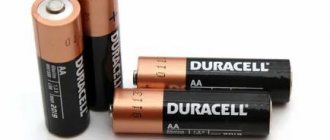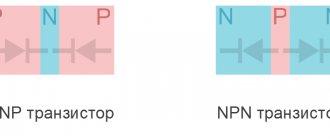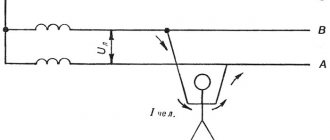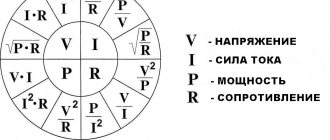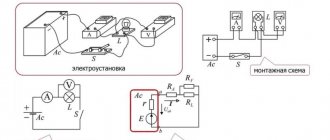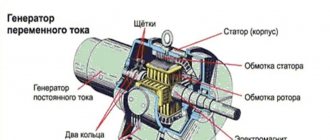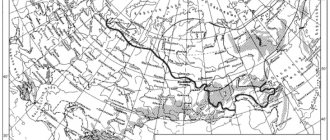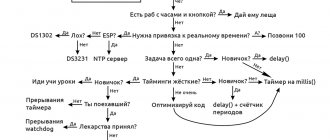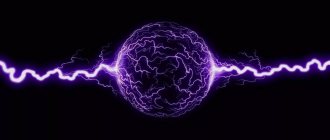In the modern world, the energy sector occupies a key place. This is the basis of overall economic development. Without this, life is almost impossible. The energy sector involves the use of both renewable and non-renewable energy sources. And since this sector is the most significant direct consumer of non-renewable natural resources, it is also a source of environmental damage. The energy sector also faces extremely serious internal and external political and economic changes and is one of the main factors determining the development trends of any country. He also has significant financial interests that influence the direction of his development. Energy imports and exports are also important to the economy as they exist in different geographical areas. Their availability varies from country to country and depends on geographical location. According to current requirements, energy must meet fuel and energy needs with minimal government expenditure while respecting environmental standards.
Electricity production depends on its consumption. This is not a product that can be stored. The advantage of electricity is that it can be easily transmitted over long distances, easily converted from one type of energy to another - thermal, light, mechanical, etc. and is an environmentally friendly resource, although production pollutes the environment to one degree or another (for example, thermal power plants).
Therefore, the availability of energy resources is important.
According to the types of energy sources, energy resources are renewable and non-renewable. Non-renewables include: coal, oil, natural gas; There are two groups of renewables - direct (solar) and indirect (wind, waves, biomass, hydropower, etc.). The third type of resource is nuclear, tidal and geothermal energy.
Non-renewable energy sources:
- Coal mining . Coal still accounts for the majority of the energy mix. It is one of the main types of raw materials on which the further development of the energy industry, and, consequently, the entire industry, depends. Coal is known as the "bread of industry". There are several types of coals - brown, black, brown and anthracite.
- Oil Production - Oil is also a very important energy resource. The Middle East has the largest oil reserves. Oil is produced by pumping.
- Natural gas production . Natural gas has a higher heating value and higher productivity than oil. It is significantly higher in calories than coal. Natural gas is also used for the needs of chemical, glass, porcelain and other industries, as well as for some thermal power plants.
The extraction of coal, oil and natural gas is associated with certain disturbances of the natural environment - changes in topography, destruction of arable land, accumulation of quarry materials, soil destruction, etc.
Renewable energy sources:
Logging . Wood is a renewable natural resource, but it takes a long time to regenerate. Depending on the type of wood, the forest is restored in a period of 50 to 100 years. Uncontrolled deforestation in plains and hilly areas is leading to their sharp decline. This, in turn, leads to higher wood prices.
Geothermal energy is heat coming from the Earth. The Earth stores enormous amounts of non-fossil fuel energy. This is known as geothermal energy. Since the formation of the Earth, there has been a constant breakdown of the minerals that made up its composition. Many of them are radioactive in nature and produce large amounts of heat. This heat is carried away to the crust and finds release when cracks appear on the Earth's surface. Such vents can be adapted to generate electricity, giving us more renewable energy sources.
Videos geothermal energy
Almost everywhere, the shallow subsurface or upper 3-4 meters of the Earth's surface maintains a constant temperature of 10 to 16 degrees Celsius. It is quite natural to use this energy for heating or cooling.
Direct applications include heating buildings, growing plants in greenhouses and more.
Hot dry rocks are found at a depth of 4-6 km. underground, and in some places at shallower depths. They can also be used as a source of energy.
Nuclear power . One of the most phenomenal phenomena in the universe is the conversion of matter into energy. The entire universe is “fed” by this process. The energy produced by stars, including the sun, comes from nuclear reactions (fusion). Nuclear energy is released by the fusion of two light hydrogen nuclei into a heavier nucleus, a helium nucleus.
Alternative energy in modern Russia
Compared to previous years, alternative energy in Russia is developing faster, but is not predominant. Today in the country the majority of energy is produced using traditional sources.
Solar power plants
Solar power plant in the Urals
The southern regions of the country, as well as Western and Eastern Siberia and the Far East have potential for the production of solar electricity. In Russia, extracting energy from the Sun is promising, so projects in this area receive government support.
Hydroelectric power stations and tidal power stations
Russia is actively using water potential to generate electricity: according to data for 2022, the country has 15 power plants with a capacity above 1000 Megawatts, and also hundreds of stations with less power. The energy generated at a hydroelectric power station costs two times less than that generated at a thermal power station.
Tidal stations require a lot of finance, so this area is not being developed in the Russian Federation. According to scientists' forecasts, PES could account for a fifth of the produced electricity in Russia.
Wind turbines
It is impossible to install generators with a horizontal axis of rotation in Russia due to low wind speeds. However, structures with a vertical axis of rotation are often used.
Wind power plant in the Ulyanovsk region
According to data for 2022, the total capacity of wind installations in Russia amounted to 134 Megawatts. The largest power plant in the Ulyanovsk region (capacity - 35 Megawatts).
Geothermal stations
There are 5 geothermal power plants in Russia, three of which are located in Kamchatka. According to data for 2016, GeoPP on this peninsula generates 40% of the electricity consumed .
Application of biofuel
Fuel production has also been organized in Russia. At the same time, it is more profitable for the country to develop solid biofuels than liquid ones. Now production is carried out at a plant in Vladivostok.
NPP
Russia produces electricity using nuclear energy and continues to develop in this direction. New stations are being built, new mining methods are being used. According to 2022 data, there are 10 nuclear power plants in Russia. The Russian Federation ranks second in the world in terms of power generation capacity using nuclear power plants; the People's Republic of China takes the lead in this industry.
Video about nuclear energy
Biomass energy. A more elemental form of clean energy is biomass. People have used it in different ways for thousands of years. Biomass is nothing more than plants and their remains, both of which are renewable sources of energy. Plants contain energy that is stored in them through the process of photosynthesis. This energy is broken down and becomes useful when plants are burned. Biomass plants are basically furnaces that can break down large quantities of feedstock. Agricultural residues, rotten plants and even wood waste can be used as raw materials.
Biofuel , which is also obtained from plants and crops. They differ from biomass as renewable energy sources because they are synthetic in nature and are not used to directly produce electricity. Ethanol is the main form of biofuel that is created by fermenting sugar. It is regularly mixed with gasoline as a vehicle fuel because it produces less carbon dioxide when burned.
Equivalent circuit - what is it?
Now let's resort to an intermediate model and introduce the concept of internal resistance
source of electricity.
Let's connect our source to a variable resistance, measure the dependence of the output voltage and current in the load on the resistance and plot a graph of the dependence of voltage on current (Fig. 1). This dependence is called load characteristic
or
current-voltage characteristic
.
In many cases (for example, for galvanic sources - batteries and accumulators) it is close to straight line. And if so, then the idea arises - to represent the source with an equivalent circuit
from an ideal source of EMF and resistance. An equivalent circuit is a circuit made up of elements that are ideal in some sense and behaves in approximately the same way as a real device.
Rice. 1
Why have equivalent circuits become widespread? The reason for this is "coincidental": people created computers late. The fact is that the computer can be provided with information about the components of the circuit in any form, and a program can be written that - if this information is complete and consistent - will calculate the circuit. But if the dependencies that characterize the elements, for example, current-voltage characteristics, are nonlinear, then the amount of calculations turns out to be too large for manual calculations. That is why the concept of equivalent circuits once arose.
At the dawn of the physics of electricity, when people knew at least something about how water flows, and electricity was completely new, the “hydrodynamic analogy” was used to consider electricity when teaching - the flow of current was considered as the flow of water. Over time, the situation was inverted - electrical circuits, also in some sense equivalent, began to be used to describe hydrodynamics. To broaden your horizons, you can ask on the Internet for equivalent diagrams of hydraulic systems
or
equivalent circuits of electric motors
.
Now let's return to the load characteristic, make a few comments and ask questions. Remark one - the extreme points are called open-circuit voltage and short-circuit current, their connection with the parameters of the equivalent circuit is obvious - it can be seen in the figure. Remark two - the concept of internal resistance was created to describe the load characteristic, and it corresponds precisely to the linear model. If we want to use it extensively and calculate it for different sections of the real characteristic, then it will turn out to be somewhat different for them.
Question 3.
If the current-voltage characteristic is convex downward at low currents, and upward at high currents, as in Figure 1, then at what currents will the internal resistance be greater and at which will it be less? And also, is it possible to use the concept of internal resistance to determine the heat dissipation inside an electricity source?
Note three - you probably noticed that the term "electricity source" is used here. Only once did the “EMF source” flash, and this was not accidental. At school, you alternately use the expressions “EMF source” and “current source.” In physics, or more precisely in its engineering-physics branch, which is called TOE - Theoretical Fundamentals of Electrical Engineering (some students winced), these two terms mean some idealized sources of electricity. Namely, an “EMF source” is one that always has the same voltage at its output terminals (this is what was meant above, where it was mentioned the only time). And a “current source” is one through whose terminals and through the external circuit the same current always flows.
Question 4:
Explain why this is not always possible. Think about the conditions under which such a model works, and come up with a model of a real source using not an EMF source (as above), but a current source.
Now let's try to go beyond the ends of the load line. It’s not for nothing that we called it a straight line and not a segment (this is, of course, a joke). But first, one more, purely school question: how do the power of the source, the power in the load and the efficiency change along our straight line - which is still a segment? If we use a model with an EMF source, as in Figure 1, then the power created by the source increases with the current from P
= 0 to
P
= \( \mathscr{E} \)
I
= \( \mathscr{E}^2 \)/
r
.
The power in the load passes through a maximum at load resistance R
=
r
, and the power released in the source grows as
rI
2, i.e. all the way - don’t burn the source! Well, the efficiency accordingly drops from 100% to 0. With a matched load it is 50%. All these answers can be given without calculations, just by looking at the diagram and thinking a little.
And now - “above the barriers”! What will happen to the load characteristic if the current is greater than the short circuit current or flows in the opposite direction? You all (well, almost all) do it, some of you do it daily. Of course, in order to pass current through the load in the opposite direction, you need another voltage source, and not just any one. Which one? And how to enable it? And in order to pass through the load a current greater than the short-circuit current, an additional source is also needed, and here it must be turned on differently, and there will be not one, but two requirements for it. The current in the opposite direction is just a charging mode. Why batteries are charging, but the batteries are either not at all or very bad, read on the Internet, the key word is depolarizer
. So, in order for the current to flow through the load in the opposite direction, we include in the load a source with a greater EMF than that of the main source, and in the opposite direction. And in order for a current to flow greater than the short circuit current, we include in the load a source with a higher EMF than the main one, and such that \( (\mathscr{E}_1 + \mathscr{E}_2)/(r_1 + r_2) > \mathscr{E}_1/r_1\).
Video about bioenergy
Hydrogen energy. Hydrogen has enormous energy and can be used to power homes and industrial plants. Hydrogen is found in water and is the most abundant element on Earth. Water contains two-thirds hydrogen, but in nature it is found in combination with other elements. Once separated, it can be used as fuel or to generate electricity. Hydrogen energy is completely renewable because it is extracted from water, which is available in abundance. It is completely environmentally friendly and does not leave toxic emissions into the atmosphere. It can be produced on demand, but the technology to produce it is still in its early stages.
Ocean energy. Almost 70% of the earth is covered with water. Due to the vast size of the oceans, this type of energy has much better potential for energy production than any other energy source. Ocean energy can be harnessed in three ways: wave energy, tidal energy, and ocean thermal energy conversion. The ebb and flow of tides is harnessed by tidal energy generators, which is then used to drive turbines, which in turn generate electricity. Tidal energy converts kinetic energy into electrical energy.
About the battery design
It's time to ask what the parameters \( \mathscr{E} \) and r
.
When we lower a conductor (particularly a metal) into an electrolyte, ions from the metal begin to move into the solution and back. These fluxes depend, in particular, on the strength of the conductor lattice, the concentration of ions in the solution and temperature. When the ions pass, the electrode charges and a potential difference arises between the electrode and the solution, forming an electric double layer
.
As a result, such a potential difference is established so that the flows become equal and a dynamic equilibrium arises. If you lower another conductor into the same electrolyte, it will have its own potential relative to the electrolyte, which differs from the one that appeared on the first electrode. Thus, a potential difference arose between the electrodes, we invented the galvanic cell
.
backup voltaic cells online
. By the way, you even know from your school textbook that there are cells with two different electrolytes, separated by a semi-permeable membrane; so this is a highly simplified picture.
As for the internal resistance, it is connected, as usual, with the resistance of the medium through which the current is forced to flow. This is an electrolyte, i.e. what is between the electrodes (and the leads, but their resistance is usually negligible). However, since the load characteristic is not linear, then the resistance is not constant, but itself depends on the current. Moreover, if we uttered the words “electric double layer,” it means that we recognized that the medium is inhomogeneous. Internal resistance, as it should be (remember R
= ρ
L
/
S
?) actually decreases with decreasing thickness and increasing layer area. But it also decreases with increasing electrode roughness, and this indicates a large contribution to the resistance of the near-cathode layer, that same double layer. In general, you will have a field for research - and this area of physics is very, very in demand by technology.
Chemical sources of electrical energy create a potential difference at their terminals, and, accordingly, an electric field appears around them. In electrostatics, these things are inseparable - a charge has a field, lines of force (with all the conventions of this concept) end and begin at the charges. Outside of electrostatics, this may not be the case - if a circuit is pierced by an alternating magnetic flux, then an electric field arises in the circuit, its lines of force are closed, they do not begin and do not end at charges. Of course, such a field is not potential - by launching a charge into this circuit or simply placing a closed conductor in it, we will extract energy from it.
Question 5.
Where, by the way, will it come from?
Let the source of electricity have a potential difference between the terminals \( \mathscr{E} \) at I
= 0, i.e.
in the absence of consumption, in idle mode. Will there be a charge at the terminals? Sometimes they clarify - excess charge, so as not to hear that “there are always some charges - protons and electrons in atoms.” Naturally, the terminals will be charged with a charge Q
E
} \)
C
, where
C
is the capacitance between the terminals, proportional to the size of the terminals
D. When we connect the terminals with resistance R
, current will flow through it and through them.
If the current is not infinitely small, then the voltage between the terminals will decrease: U
< \( \mathscr{E} \), and the charge will also decrease.
The charge difference will be discharged through this same resistance in the form of a pulse current, the duration of this pulse will be of the order of τ = max( RC
,
D
/
c
), where
c
is the speed of light,
R
is the resistance of the terminals and load, it does not include the source resistance
r
.
In other words, the exchange of charges between the terminals will occur even if we break the source circuit, i.e. Let's make r
indefinitely large.
It would seem like an exotic situation? Yes, but absolutely real, for example - the Oxford electric bell
.
If we greatly simplify the situation, then this is a pendulum, the ball at the end of the thread oscillates, alternately touching the contacts of a high-voltage battery and, at the moment of contact, being charged from them. At the same time, the internal resistance of the battery is enormous, the average current consumption is negligible (the device runs on one battery for more than a century), but the charging time is very short, so the current in the pulse is significant. If the battery resistance is high, the charge of the ball touching the terminals occurs not with the “battery” current, but with the current of the charge accumulated at the terminals. Here is an estimate of the parameters: \( \mathscr{E} \) = 103 V, C
= 10−12 F,
Q
= 10−9 C, τ = 3 10−11 s,
Imax
=
Q
/τ = 30 A, however the average current is equal to the ratio
of Q
to the oscillation period
T
= 1 s, i.e. 10−9 A.
